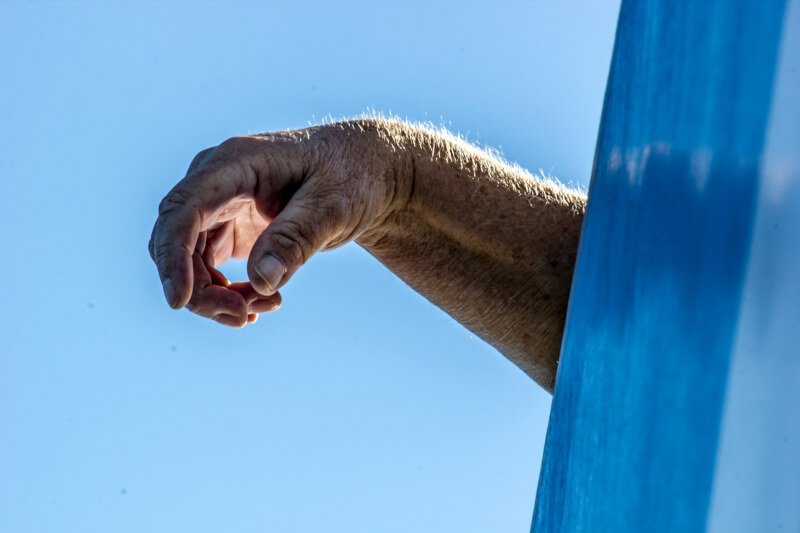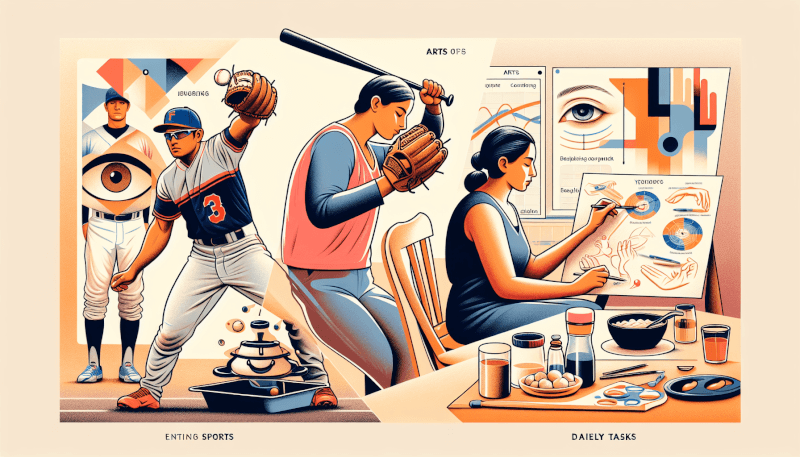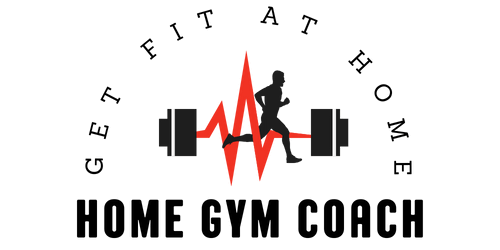If you’ve ever struggled with catching a ball, swinging a racket, or even typing on a keyboard with precision, then you know the importance of good eye-hand coordination. But fear not, because help is on the way in the form of custom workout plans specifically designed to improve this crucial skill. Whether you’re an athlete trying to up your game or just someone looking to enhance their everyday motor skills, these personalized exercises will have you feeling like a coordination superstar in no time. So grab your pen and paper, and get ready to embark on a journey towards better eye-hand coordination!
Benefits of Improving Eye-Hand Coordination
Enhanced sports performance
Improving eye-hand coordination can greatly enhance your sports performance in various ways. With better coordination between your eyes and hands, you can react quickly to visual cues, improving your ability to track moving objects and make accurate throws or hits. Whether you are playing basketball, baseball, tennis, or any other sport, improved eye-hand coordination can give you a competitive edge by helping you anticipate and react faster to the actions happening around you.
Improved reaction time
Having good eye-hand coordination can significantly improve your reaction time. This means that you will be able to respond more quickly and accurately to stimuli in your environment. Whether you are catching a ball, hitting a tennis serve, or participating in any other activity that requires split-second reactions, honing your eye-hand coordination will help you react faster and with greater precision.
Enhanced fine motor skills
Strong eye-hand coordination is essential for fine motor skills, which involve precise movements of the hands and fingers. Activities such as playing a musical instrument, writing, or even typing require good eye-hand coordination to perform tasks accurately. By improving your eye-hand coordination, you can enhance your dexterity and control over fine motor movements, leading to improved performance in various daily activities.
Understanding Eye-Hand Coordination
Definition of eye-hand coordination
Eye-hand coordination refers to the ability to coordinate visual information received by the eyes with movements of the hands and fingers. It involves the synchronization of visual input and motor output, allowing you to perform tasks that require precise hand-eye movements. Eye-hand coordination is a vital skill that underlies a wide range of activities, from playing sports to completing everyday tasks.
Importance of eye-hand coordination in daily activities
Eye-hand coordination plays a crucial role in various daily activities. Whether you are pouring a cup of coffee, using a smartphone, or even driving a car, your eyes and hands need to work harmoniously to execute these tasks accurately and efficiently. Poor eye-hand coordination can lead to difficulties in performing these activities, impacting overall productivity and quality of life. By improving your eye-hand coordination, you can enhance your ability to carry out tasks with greater precision and ease.

Assessing Your Current Eye-Hand Coordination
Eye tracking exercises
Before designing a custom workout plan, it’s essential to assess your current level of eye-hand coordination. One way to do this is by engaging in eye tracking exercises. These exercises involve focusing on a moving target with your eyes while keeping your head still. You can track objects such as a pen, a finger, or even a small moving light. Regularly practicing eye tracking exercises will help you gauge your ability to visually follow objects and identify any areas that need improvement.
Hand-eye coordination tests
Hand-eye coordination tests can provide valuable insights into your current level of coordination. These tests often involve activities such as catching a ball, threading a needle, or stacking blocks. By measuring your performance in these tasks, you can identify areas where your eye-hand coordination may be lacking and tailor your workout plan accordingly.
Designing a Custom Workout Plan
Identifying specific goals
In order to design an effective workout plan, it’s important to identify specific goals for improving eye-hand coordination. Are you looking to enhance your performance in a particular sport, such as basketball or baseball? Or are you interested in improving your fine motor skills for daily activities like writing or playing an instrument? Clearly defining your goals will help you focus your efforts and design a tailored workout plan.
Tailoring exercises to individual needs
Every individual is unique, and so are their eye-hand coordination abilities. It’s important to tailor your workout plan to address your specific needs and challenges. For example, if you struggle with tracking moving objects, you can incorporate visual tracking exercises into your routine. On the other hand, if your aim is to improve fine motor skills, hand-eye coordination drills that involve precise hand movements may be more beneficial. By customizing your workout plan, you can target the areas that need improvement and make the most progress.

Exercises for Improving Eye-Hand Coordination
Visual tracking exercises
Visual tracking exercises are designed to improve your ability to visually track moving objects. One simple exercise is to toss a small ball or object gently back and forth between your hands while visually tracking its movement. Another effective exercise is to follow the path of a moving target, such as a swinging pendulum or a moving light, with your eyes. Regularly incorporating these visual tracking exercises into your workout plan can help improve your ability to track moving objects and enhance overall eye-hand coordination.
Hand-eye coordination drills
Hand-eye coordination drills focus on improving the synchronization between your eyes and hands. Simple activities such as juggling or playing catch with a partner can be effective in developing your hand-eye coordination. Another drill involves bouncing a ball off a wall and catching it with one hand. These drills not only help improve your reaction time but also enhance the accuracy and precision of your hand movements.
Targeted sports-specific exercises
If your goal is to enhance your performance in a specific sport, incorporating sports-specific exercises into your workout plan can be highly beneficial. For example, if you play tennis, practicing hitting balls against a wall can improve both your eye-hand coordination and your tennis skills. Similarly, if you play basketball, working on dribbling drills that involve quick hand movements and visual tracking can enhance your performance on the court. By incorporating targeted exercises that mimic the movements and demands of your chosen sport, you can improve your overall eye-hand coordination and excel in your athletic pursuits.
Implementing the Workout Plan
Setting a schedule
To make the most of your custom workout plan, it’s important to set a schedule and stick to it. Consistency is key when it comes to improving eye-hand coordination. Set aside dedicated time each day or week for practicing the exercises in your plan. Whether it’s a few minutes each day or longer sessions a few times a week, establishing a regular practice routine will allow you to gradually build your skills and see progress over time.
Tracking progress
Tracking your progress is essential to monitor your improvement and stay motivated. Keep a log or journal where you can record your performance in various exercises and activities. Note any improvements, challenges, or areas that need more focus. By tracking your progress, you can see how far you’ve come and identify areas that require additional attention.
Modifying the plan as needed
As you progress in your eye-hand coordination journey, it’s important to continuously assess and modify your workout plan as needed. As you overcome challenges or achieve specific goals, you may need to increase the difficulty level of certain exercises or introduce new ones to keep challenging your abilities. Be flexible and open to adjusting your plan based on your evolving needs and goals.

Choosing the Right Equipment
Equipment for visual tracking
When engaging in visual tracking exercises, having the right equipment can enhance the effectiveness of your workouts. Simple tools such as small balls, bouncing balls, or even light-up toys can be used to improve your tracking abilities. Incorporating equipment that is visually stimulating and easy to track will help you sharpen your eye movements and improve your eye-hand coordination.
Equipment for hand-eye coordination drills
Hand-eye coordination drills may require specific equipment depending on the exercise. For activities like juggling or playing catch, you may need balls or objects that are suitable for the specific task. If you are engaging in sports-specific exercises, investing in appropriate sports equipment such as racquets, bats, or balls will be beneficial. Ensure that you have the necessary equipment to perform the drills effectively and safely.
Safety Considerations
Warm-up and cool-down exercises
Before starting any workout plan for improving eye-hand coordination, it’s important to warm up your muscles and joints to prevent injury. Engage in gentle stretching exercises to loosen up your body and increase blood flow to the muscles. After the workout, cool down with gradual stretching and relaxation exercises to prevent muscle soreness and promote recovery.
Preventing overuse injuries
When engaging in eye-hand coordination exercises, it’s important to listen to your body and avoid overdoing it. Start with manageable durations and gradually increase the intensity and duration of your workouts. Overuse injuries are common when pushing beyond your limits, so be mindful of any discomfort or pain and take appropriate breaks and rest days to allow your body to recover.
Proper technique and form
To maximize the benefits of your eye-hand coordination exercises and reduce the risk of injury, it’s crucial to maintain proper technique and form throughout the workouts. Pay attention to your body alignment, grip, and movement patterns. If you are unsure about the correct technique, consider seeking guidance from a professional or experienced instructor who can provide demonstrations and feedback.

Incorporating Eye-Hand Coordination in Daily Life
Practical activities to enhance coordination
Improving your eye-hand coordination doesn’t have to be limited to structured workouts. There are numerous practical activities you can incorporate into your daily life to enhance coordination. Engage in hobbies such as drawing, painting, or knitting that require precise hand movements and visual focus. Practice activities like cooking or playing video games that involve coordination between your hands and eyes. By actively engaging in these activities, you can reinforce and apply the skills you are developing through your workout plan in real-life scenarios.
Eye-hand coordination games and puzzles
In addition to practical activities, there are various games and puzzles specifically designed to improve eye-hand coordination. Games like jigsaw puzzles, maze games, and card games can challenge your ability to visually track and manipulate objects. Video games that require quick reflexes and hand-eye coordination, such as puzzle-solving or action games, can also be effective in enhancing your coordination skills. Incorporating these games and puzzles into your routine can make the process of improving eye-hand coordination more enjoyable and engaging.
Seeking Professional Guidance
Consulting a sports trainer or therapist
If you are looking to enhance your eye-hand coordination for sports-specific purposes or to overcome specific challenges, consulting a sports trainer or therapist can be highly beneficial. These professionals have expertise in designing personalized training programs and can provide guidance on technique, exercises, and progress tracking. They can work with you to develop a comprehensive plan that aligns with your goals and provides the necessary support for improvement.
Working with an optometrist or ophthalmologist
In some cases, individuals may have underlying visual impairments or conditions that affect their eye-hand coordination. If you suspect that a vision issue may be hindering your coordination abilities, it’s important to consult an optometrist or ophthalmologist for a comprehensive eye examination. They can diagnose any vision-related issues, prescribe corrective measures such as glasses or contact lenses, and provide additional recommendations and resources for improving eye-hand coordination.
Improving eye-hand coordination is an ongoing process that requires dedication, practice, and targeted exercises. By following a custom workout plan and incorporating eye-hand coordination exercises into your daily routine, you can enhance your sports performance, reaction time, and fine motor skills. Remember to warm up, listen to your body, and seek professional guidance when needed. With consistent effort and the right approach, you can reap the benefits of improved eye-hand coordination in both sports and daily activities.



